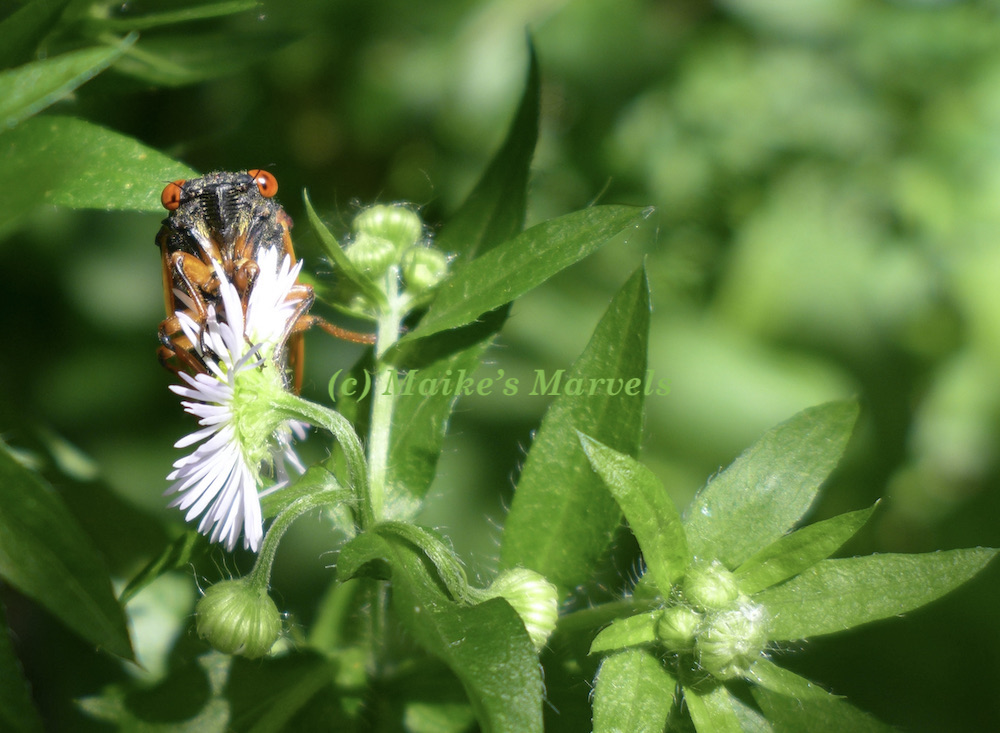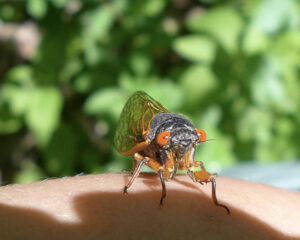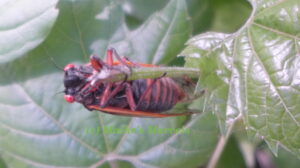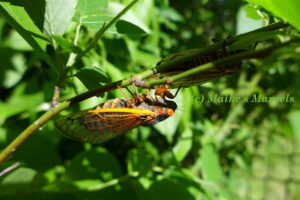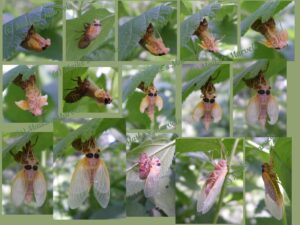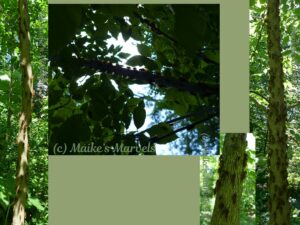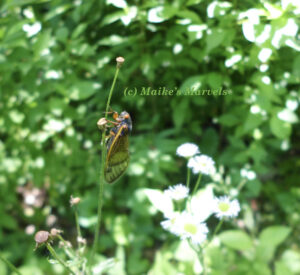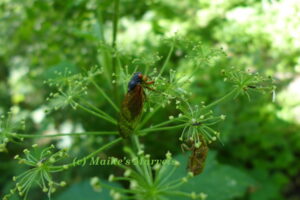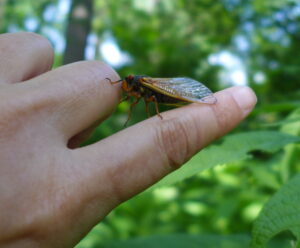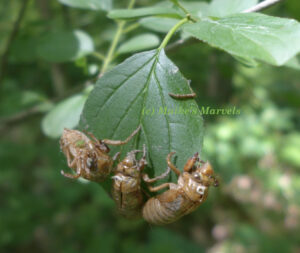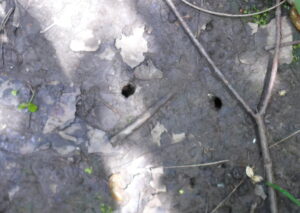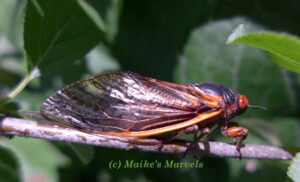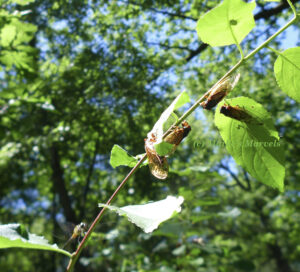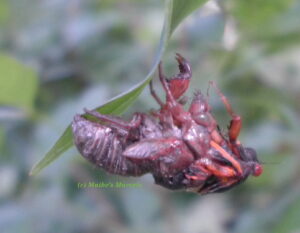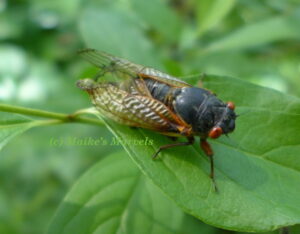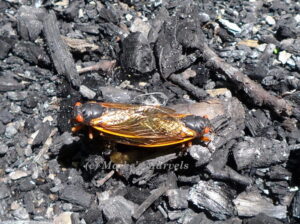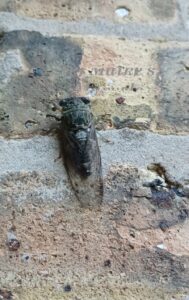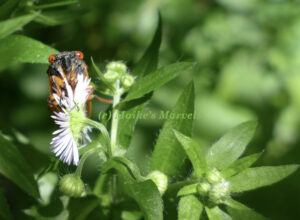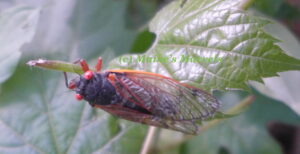Nature Photography, Travel and Excursions
A Historic Brood
It’s been a busy summer researching some passion projects and rehoming myself after a few years of caregiving flux. In June two broods of periodical cicadas descended upon Illinois, and I fully expected them to land on my back porch like the annuals do. However, South Evanston was spared and I had to drive to find them.
Skokie’s Emily Oaks Nature Center did not disappoint. I heard the “UFO hovering” sound as I neared the park and then just followed my ears to where they were gathered. I saw their bellies compared to accordions, and while that may not be quite accurate, I get the reference. According to Brittanica: “Male cicadas produce loud noises by vibrating membranes (tymbals) near the base of the abdomen.” The three sounds they make include: “a congregational song that is regulated by daily weather fluctuations and by songs produced by other males; a courtship song, usually produced prior to copulation; and a disturbance squawk, produced by individuals captured, held, or disturbed into flight.”
I think our region had Brood XIII, but I have no idea how Brood XIX differs. I just like that they are named Magic Cicadas (Magicicada). 
I watched one emerge for about an hour which was mesmerizing. Unfortunately I couldn’t stay to watch it also change color.
I also noticed them surrounding trees after an art opening in North Evanston on a rainy evening, which was more in line with the online depictions of their clustering. There I could observe the nymphs climbing up the tree from the ground, which was more obscured by the dense growth in Emily Oaks. I will spare you the pics because it was soggy that day and not photogenic.
I went back to Emily Oaks a second time to get my fill of the sound, since it will be 13 to 17 years before the next emergence of these black and red creatures.
There were Facebook groups sharing sightings. Some people joined to make travel plans for this historic double-brood event, and some were asking how to avoid the insects. Others posted recipes for consuming them, which turned out to be bad for dogs having too many snacks, and entomologists asked for locations and save specimens, especially the blue-eyed ones (which I didn’t see).
I became more insect-friendly after researching butterflies and visiting the Field Museum’s collection. So I understand how this emergence was creepy to many people and the noises annoying to those with backyard residents.
But their life cycles also gave some perspective on timing and purpose. Being at a vocational crossroads in my life, the thought of just emerging to mate and die seemed so simple compared to the human quest for productivity and influence.
Meanwhile, watching global news made the idea of diving underground for 17 years attractive, too.
But being immersed in the sound and surrounded by cicadas for a few hours on a sunny day was a lovely respite from the stress of adulting.
Watching the friendly communications helping fearful people understand that cicadas are harmless and actually beneficial to nature, and seeing the joyous fascination of others was uplifting.
Some were genuinely sad when they encountered deformed or unformed cicadas.
But this too is part of their strategy, to saturate nature so hard that some are food and others reproduce the next generation.
This couple chose a hot spot, lol.
Now my annual summer guests, the dog-day cicadas (Neotibicen canicularis), are coming to visit, and the new cicada initiates online are becoming more insect-curious as a result, not just asking about them but also posting other bugs to gain more understanding.
Nature is such a wonderful teacher.
What summer critters fill you with fascination? Or would you rather stay inside while pollinators and pest controllers flit about?

